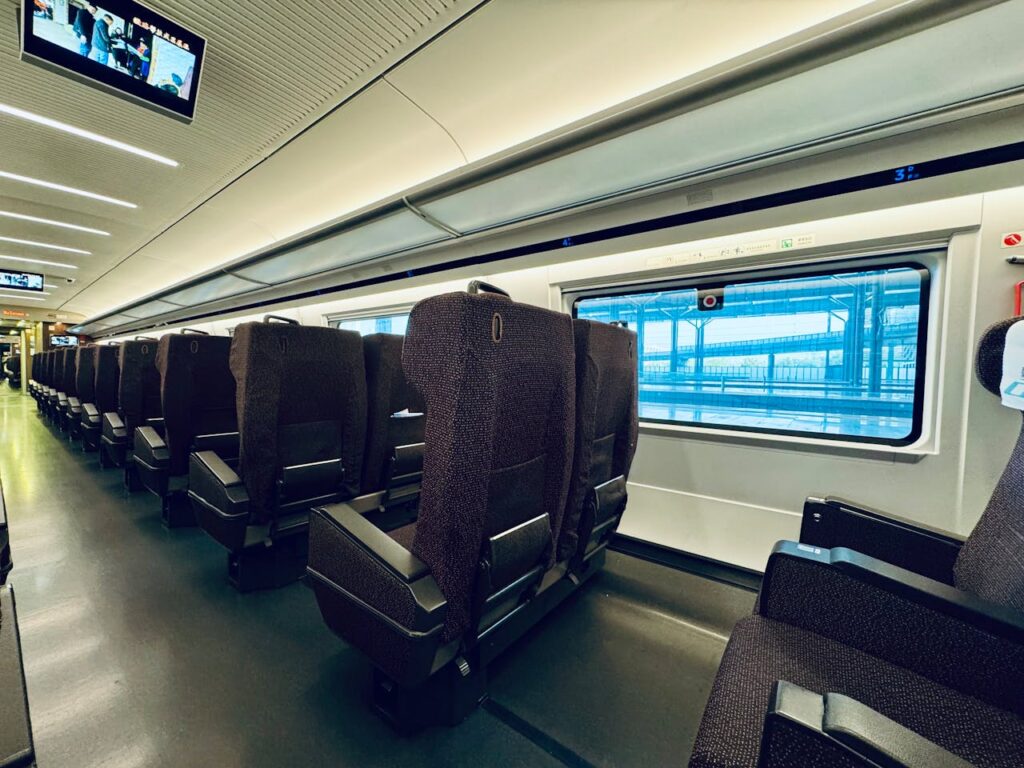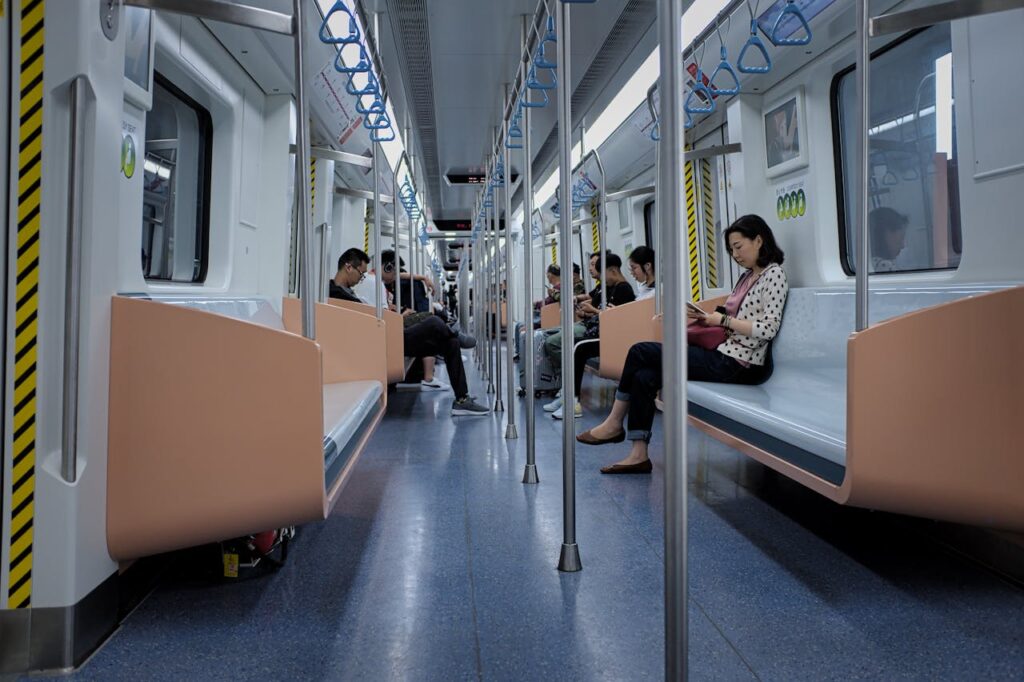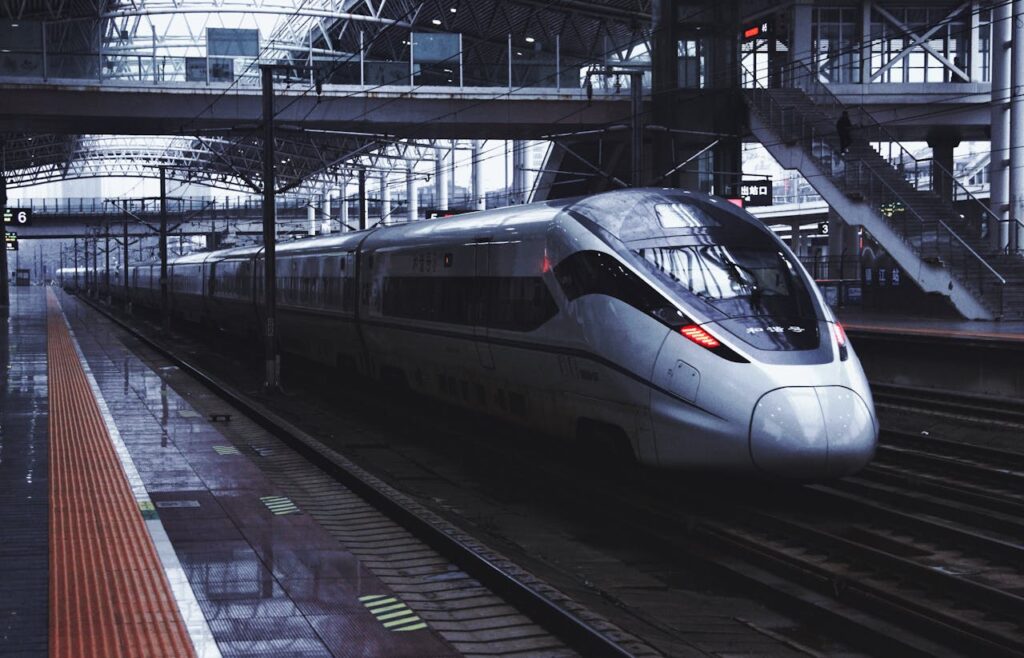China Is Developing A Levitating Train That Could Travel From New York To Chicago In Just Two Hours

We live in an age where time feels both scarce and wasted. We scroll endlessly, wait in traffic, stand in lines, and fly across skies in cramped seats while our potential sits grounded. But what if time didn’t have to be the enemy? What if we could fold geography like paper, bend the map, and move not just faster—but smarter? In the heart of this question is a train that doesn’t touch the ground. A machine that floats. A vision that dares to say: we can do more than just arrive—we can evolve.
This isn’t science fiction. It’s happening now. As some nations argue over potholes and delayed bus schedules, others are building the future on magnetic rails. China is developing a levitating train that could travel from New York to Chicago in just two hours. That’s not a metaphor—it’s a prototype, already tested, already pushing limits. But this story isn’t just about technology—it’s about how we define progress. It’s about who gets left behind, and who chooses to lead. It’s a mirror held up to our priorities, asking not just how fast we can move, but what kind of world we want to move through.

The Technology That Floats Above Limits
Imagine gliding from New York to Chicago in just two hours—no turbulence, no security lines, no cramped airplane seats. Just a near-silent sweep across the land, hovering above steel rails at nearly 500 miles per hour. This isn’t a dream cooked up in a sci-fi writer’s mind—it’s maglev, short for magnetic levitation, and it’s very real. Instead of wheels grinding along tracks, maglev trains float using powerful electromagnetic forces, eliminating friction and redefining what speed on land can mean. The process begins with ordinary wheels helping the train accelerate, but once it reaches the 100–200 km/h range, those wheels retract and the train levitates a fraction of an inch above the guideway. From there, it’s a matter of acceleration—clean, quiet, and blisteringly fast.
China’s most recent maglev prototype, revealed with fanfare at the World Congress on High Speed Rail in Beijing, has already achieved test speeds of 650 km/h (around 400 mph), with engineers now pushing for a cruising speed of 800 km/h. At that pace, you could cross the entire U.S. faster than most domestic flights allow with layovers. Li Weichao, head of the testing facility, explained that the train hits 650 km/h in just 1,000 meters of track—less than a minute to rocket into a speed previously reserved for airplanes. These aren’t just theoretical concepts; they’re hardware-in-motion, bolstered by years of engineering and real-world tests. This project isn’t a distant vision—it’s nearing completion, with its construction phase expected to be fully wrapped by year’s end.
China already operates the world’s fastest commercial train—the Shanghai-Hangzhou Maglev—which hits a top operating speed of 431 km/h (267 mph). That makes it the fastest train of any kind running anywhere on Earth. But this next-generation maglev takes the leap even further, setting new records and expanding the realm of what’s possible. While the infrastructure needed for maglev systems is costly and complex, China is proving that with strategic commitment and engineering grit, the barriers can be overcome. This isn’t just a train—it’s a metaphor for motion itself, a glimpse into how the future arrives: not all at once, but through quiet levitation just above the ground, faster than the eye can follow.

Why Others Are Falling Behind
While China accelerates into the future, other nations with advanced economies find themselves stuck at the station—debating, delaying, and detouring. The United States, for all its innovation in other fields, continues to lag behind when it comes to modern rail infrastructure. In fact, many major U.S. cities still rely on outdated, overburdened systems that struggle to meet even basic commuter needs. The concept of a high-speed rail line connecting cities like New York and Chicago remains more of a political fantasy than a public works project. The proposed maglev line between Washington, D.C. and Baltimore—just 40 miles apart—has been stalled in regulatory red tape and environmental impact assessments for years, despite its potential to slash travel time to just 15 minutes. Ambition exists, but action is paralyzed by bureaucracy, competing interests, and a lack of unified vision.
Japan, often recognized for pioneering high-speed trains with its famed Shinkansen, is now grappling with its own delays. A flagship maglev project that would connect Tokyo and Nagoya, designed to cut a three-hour journey to just 40 minutes, has hit a decade-long delay due to local political disputes and the environmental challenges of tunneling through the Japanese Alps. Despite being a global leader in precision engineering and rail innovation, even Japan is learning that speed on the tracks doesn’t always translate to speed in policy and execution. What’s revealing is that these setbacks aren’t due to technological impossibility—the tech exists, and it works. The challenge lies in the systems around the systems: environmental laws, land use debates, community opposition, and the sheer cost of innovation in countries with more decentralized or cautious infrastructure planning processes.
Meanwhile, China has approached maglev not just as a mode of transportation, but as a national strategic goal—backed by centralized planning, massive investment, and a long-term view. It’s not that China doesn’t face challenges—it absolutely does—but its ability to align political will, engineering talent, and financial resources under a single directive allows it to turn prototypes into reality at a speed few others can match. As a result, while some nations are drafting feasibility studies or negotiating with stakeholders, China is testing 800 km/h trains on real tracks. This disparity raises a deeper question: in a world where the technology for transformation already exists, what really holds us back—resources, or resolve?

Speed That Reshapes Society
Speed isn’t just about saving time—it’s about rewriting the map of possibility. A train that can travel 500 miles in two hours doesn’t just connect cities; it compresses geography, erases distances, and shifts the gravitational pull of entire economies. Imagine what happens when cities like New York and Chicago are no longer separated by an exhausting plane ride or a full day’s drive, but by the equivalent of a long lunch break. Labor markets expand. Families split across states see each other more often. Businesses rethink where to locate. Suddenly, you don’t have to live where you work—you can live where you thrive, and commute across half the country in the time it takes most people to get through rush hour traffic.
In this kind of world, regional boundaries begin to dissolve, and with them, some of the economic disparity that geography has long enforced. Smaller cities could gain new relevance as travel hubs or commuter-friendly alternatives to overcrowded metropolises. Local economies would no longer be boxed in by their physical isolation. Just as the internet collapsed distances in communication, high-speed ground travel could collapse distances in physical presence. A student in one city could intern in another. A patient could travel across states for specialized care without the fatigue and delay of air travel. The psychological perception of distance shrinks—and with it, the emotional drag that often keeps people from chasing opportunities.
But there’s something even more profound at play. High-speed transport challenges our assumptions about time itself—how we spend it, what we sacrifice, and what we gain. So much of modern life has been shaped by the slow grind of infrastructure catching up with ambition. Now, that equation can flip. Time, once a constraint, becomes a canvas. The hours we save could be reinvested into relationships, creativity, rest, or growth. And in a culture addicted to urgency yet drained by inefficiency, that’s not just progress—it’s liberation. Not everyone may ride these trains tomorrow, but the very existence of this technology tells us something vital: the limits we think we live with are often only waiting to be redesigned.

The Cost of Speed
Every leap forward carries its own weight, and maglev is no exception. Building the infrastructure to support floating trains that travel nearly the speed of a jetliner is a staggering endeavor—technically, financially, and politically. These systems require specialized tracks, complex control centers, and precise alignment that leaves no room for error. The upfront investment isn’t just in the billions—it’s in commitment, in land, in compromise. Japan’s maglev delay over tunneling through the Japanese Alps is a case in point: even the most technologically advanced plans can be brought to a standstill by environmental concerns, local resistance, or competing regional interests. In the U.S., where private property laws and decentralized infrastructure planning dominate, building a continuous maglev corridor would mean cutting through layers of regulation and public opinion—not to mention navigating a fragmented political landscape that often can’t agree on what to fix, let alone build anew.
And then there’s the environmental question. While maglev trains themselves are clean and efficient compared to planes or cars—powered by electricity and emitting no direct pollution—the process of constructing them can carry a significant environmental footprint. Land clearing, material sourcing, energy use during construction—all of it leaves a mark. Advocates argue that the long-term emissions savings justify the upfront costs, especially as the world races to decarbonize. But these projects still face fierce scrutiny, particularly when they pass through sensitive ecosystems or densely populated areas. Balancing progress with preservation remains one of the hardest equations modern societies have to solve, and there’s no shortcut around that complexity.
Beyond the logistics lies a deeper cost: the cost of vision. Speed can be seductive. It can make us chase motion for motion’s sake. But true progress isn’t just about how fast we can go—it’s about where we’re going and why. A levitating train that links cities in hours is awe-inspiring, yes—but if it leaves behind the communities it cuts through, or widens the gap between those who can access its benefits and those who can’t, then it becomes another symbol of inequality masked as advancement. That’s why any conversation about maglev—and technology at large—has to include equity, sustainability, and thoughtful design. Otherwise, we risk building highways to nowhere, faster than ever before.
What Future Are We Really Building?
The story of maglev isn’t just about magnets and motion—it’s about mindset. It asks us to reconsider what’s possible when we stop accepting delay as destiny. In a world that often feels gridlocked—by politics, by systems, by fear of change—maglev reminds us that we are still capable of radical acceleration, not just in speed, but in imagination. But speed alone isn’t salvation. The real question isn’t whether we can build trains that float, but whether we will build a world that truly moves with them—one that’s fairer, smarter, more connected, and deeply human. Because if we’re not careful, we’ll spend all our energy building machines that fly while our values stay stuck in place.
Every generation faces a fork in the road between comfort and courage. This is one of ours. Will we cling to the inertia of what’s familiar, or will we dare to lay down the track for something better—not just faster, but wiser? We live in a time where the tools for transformation are already in our hands, yet hesitation too often wins. But innovation without vision is just noise. And technology without empathy is just machinery. We have the power to move faster than ever before. The real work is choosing where that speed takes us.
So maybe the message isn’t just about a train. Maybe it’s about what it takes to rise. Not just off the tracks—but above the excuses, above the gridlock, above the fear. The future is not waiting. It’s levitating—just inches off the ground, asking if we’re willing to rise with it.
Loading...

